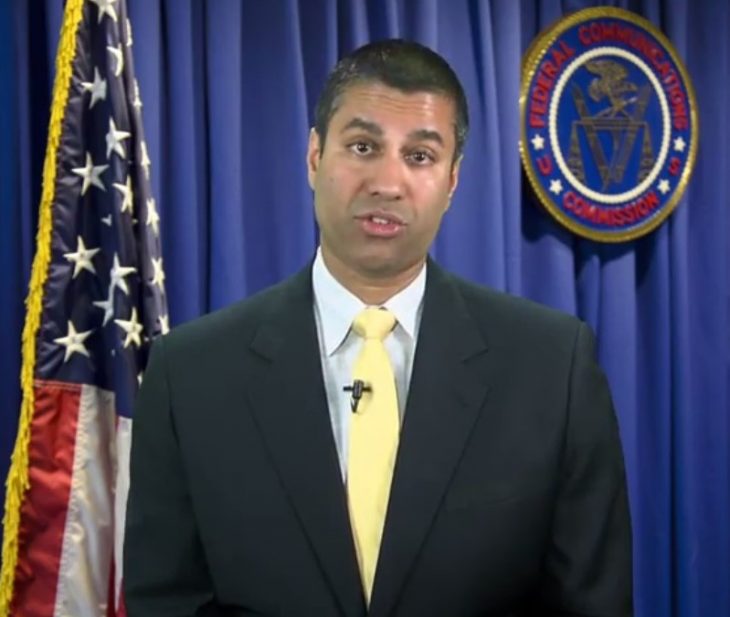
TORONTO – Federal Communications Commission chairman Ajit Pai told Canadian Telecom Summit delegates that regulators have to get out of the way when it comes to innovation.
In a video presentation Wednesday, Pai praised the work the Canadian and American regulators do together, such as the uniform North American band plan for UHF TV signals and the new 600 MHz wireless band, “paving the way for cross-border interoperability of devices and networks,” he said. “I look forward to continuing to work together to craft solutions that benefit Americans and Canadians alike.”
However, with the two agencies diametrically opposed when it comes to the very important issue of network neutrality, Pai’s following comments are surely noteworthy. (Ed note: Pai’s goals are detailed below. Our CRTC, cemented its stringent network neutrality outlook with the Vidéotron Unlimited decision that eliminated differential pricing, a practice which Pai has indicated support.)
When speaking on his views of innovation, one of the conference’s themes, “we begin with the premise that breakthrough advances are going to come from private sector entrepreneurs, not government policy makers. We want to empower inventors to bring their ideas to life. Now often that just means getting government out of the way. That also means promoting competitive markets and providing key inputs, like spectrum, that aid the incentives to create,” he said,
Pai noted that since his appointment a month ago, he has decided to undertake an “across the board” review to try and figure out which regulations, whether wireless, wired, TV or radio, “still make sense in the digital age.
“When the facts warrant, we won’t hesitate to revise overly burdensome rules or repeal them altogether. We’ve also put in place a process to ensure that, if an innovator seeks FCC approval of a new technology or service, we’ll make a decision within one year. That’s light-speed in our world,” he added.
He noted the FCC is now allowing television broadcasters to use the next generation TV standard, ATSC 3.0, on a voluntary, market-driven basis while on the spectrum front, it has opened up almost 11 GHz of spectrum in the bands above 24 GHz for mobile use. “This gives operators a clear path to launching 5G and other innovative millimeter wave services in the United States. And we’re currently considering opening up even more of this spectrum,” said Pai.
“Now, as we move to 5G, regulators also must recognize something many people often don’t. Innovation isn’t limited to the so-called edge of networks. Innovation within networks is also critical, especially in the mobile space. To realize the digital future, we need smart infrastructure, not dumb pipes.”
That brought him to the topic of investment – and criticism of the agency under former FCC chair Tom Wheeler – with whom he served as a commissioner before being promoted. “For almost two decades, the FCC pursued a light touch approach to regulation, one that produced tremendous investment and innovation throughout our entire internet ecosystem, from the core of our networks to providers at the edge. But two years ago, the U.S. government’s approach suddenly changed. The FCC, on a party-line vote (when the Democrats were in charge), decided to slap an old regulatory framework, called Title II – after the section of our statute where the rules are found – originally designed in the 1930’s for the Ma Bell telephone monopoly, upon thousands of internet service providers, big and small.”
"America’s approach to broadband policy will be practical, not ideological." – Ajit Pai, FCC
Pai, as has been widely reported in the States, believes this has killed investment. “From 2014 to 2016, the broadband infrastructure investment in the United States dropped, the first decline ever, outside of a recession,” he said. So, now with the Republicans are in charge, the FCC voted to start a process to reverse the Title II decision.
(Ed note: There is other evidence out there which shows investment by network operators has, in fact, not declined as Pai says. Expect a pitched battle in Washington...)
“I’m confident that this move puts us on the path to more broadband infrastructure investment, which would mean more Americans with high-speed internet access, more jobs building those networks, and more competition,” he said in the video.
He has also moved to relieve small American ISPs from Title II reporting requirements immediately, noting it’s hard for companies with fewer than 1,000 subscribers and a handful of employees, to comply.
“In short, America’s approach to broadband policy will be practical, not ideological,” Pai continued. “We’ll embrace what works, and dispense with what doesn’t. That means removing barriers to innovation and investment, instead of creating new ones. That means taking targeted action to address real problems in the marketplace, instead of imposing broad preemptive regulations. And that means respecting principles of economics, physics and law, and acting with humility as we regulate one of the most dynamic marketplaces history has ever known. This vision will unleash the massive investments that the digital world demands.”
Photo screen-capped from video.



